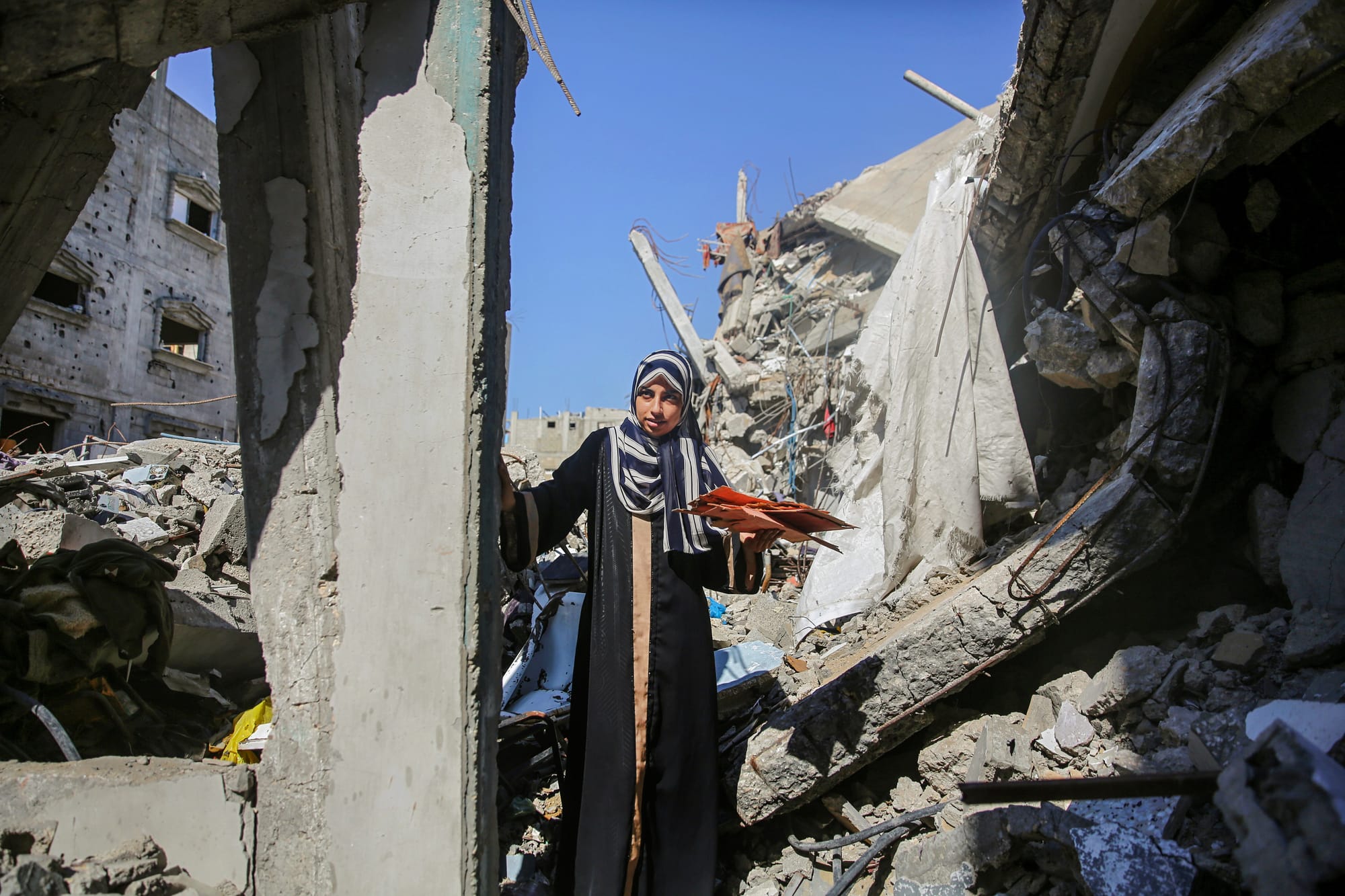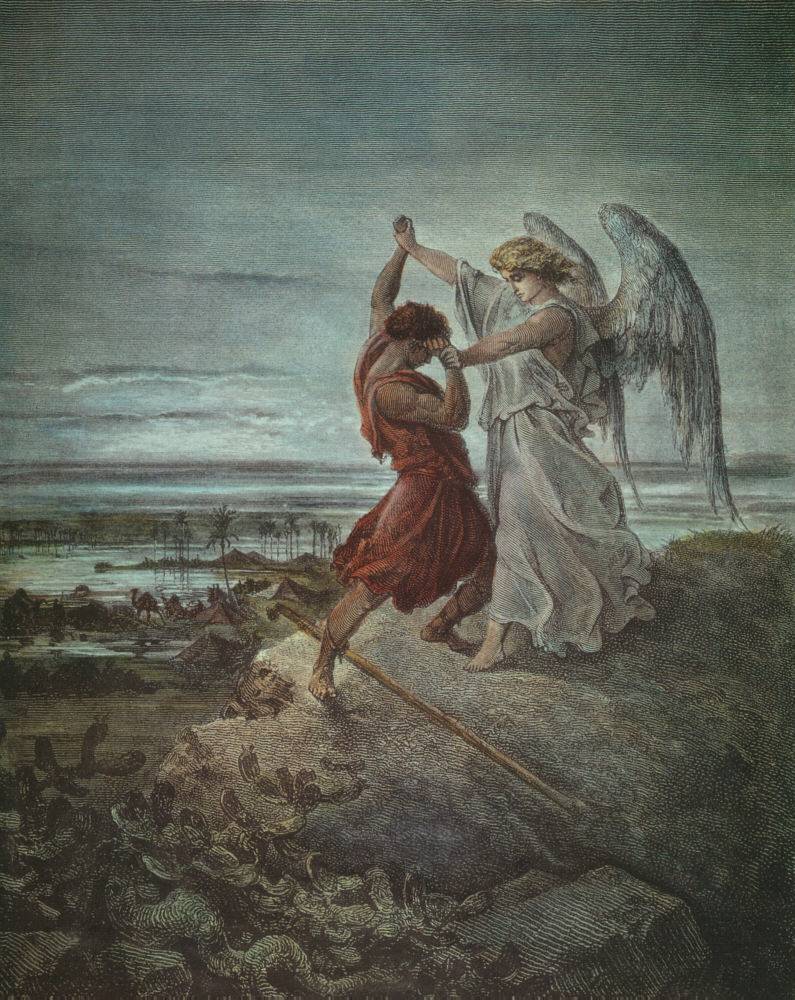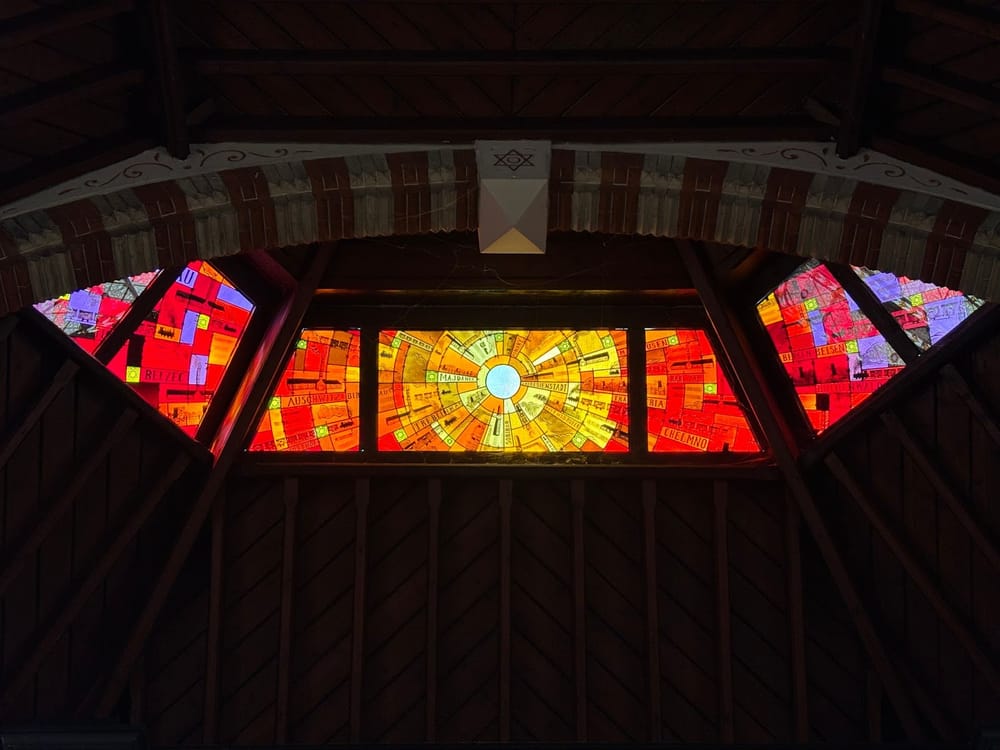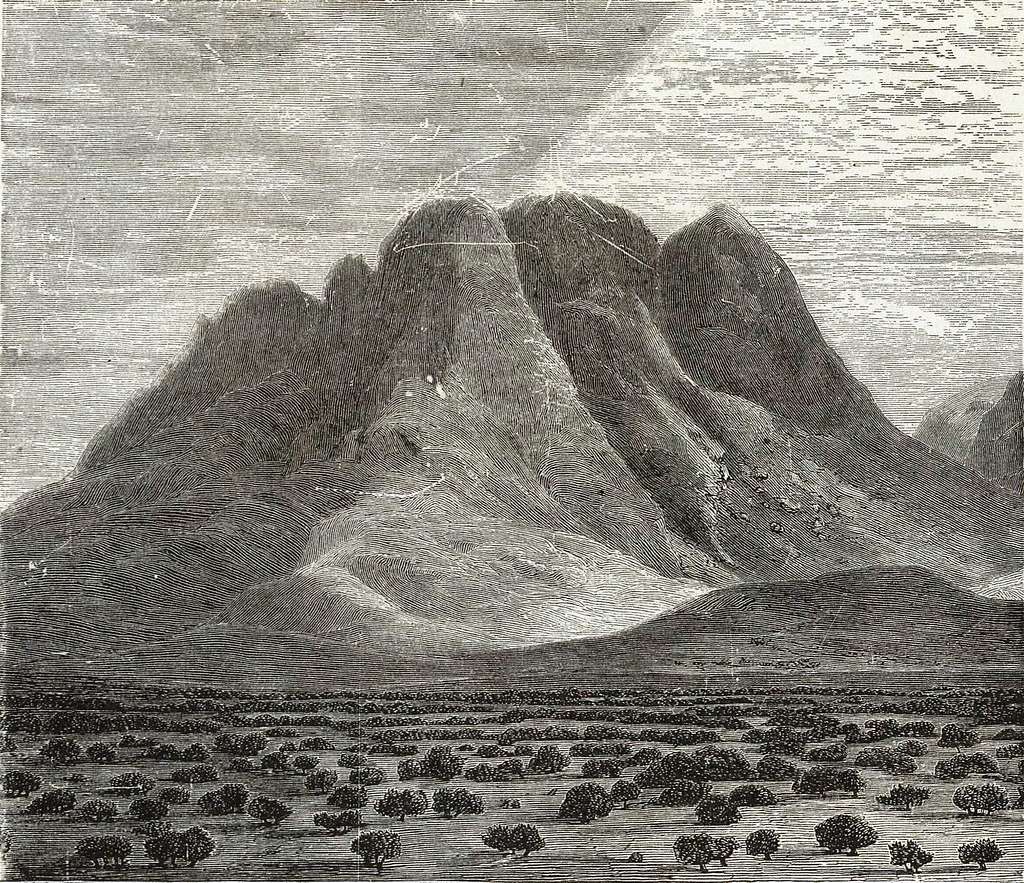Blood on our doorposts, blood on our doorsteps
This Passover, there can be no turning away from Gaza.

This week, Jewish people across the world will tell the story of the Ten Plagues, as we are obligated to do every year. During the Seder, we will mention the tenth plague, the killing of the firstborn, five times. At points, this gruesome act will be described explicitly – such as during the maggid (narration of the Passover story), where we will cite its source, Exodus 12:12: “I will go through the land of Egypt and strike down every [male] first-born in the land of Egypt, both human and beast.” Other references will be more oblique, such as the presence of the Paschal lamb, symbolised on the Seder plate by a shank bone. This bone commemorates the command given to the enslaved Israelites to slay a lamb and paint its blood upon their doorposts and lintels, thereby signalling to God (God, and not an angel or seraph) that this was a Jewish home, and not a legitimate target. Thanks to this act, God does not quite strike down every firstborn in the land: Jewish families are passed over, and spared this chilling visitation.
This year’s Passover celebration is the second in a row where Jews will commemorate our liberation while Gaza is under siege and bombardment. During the Israeli disengagement from the Strip in 2005, Israel shifted its mechanism of control over life in Gaza from “boots on the ground” occupation to remote control over Gaza’s air, land and sea enacted through surveillance, access policy and military enforcement. As part of this process, Israel’s settlements in Gaza were dismantled. These changes paved the way for increasingly deadly military campaigns carried out through indiscriminate and heavy aerial bombardments, since they would no longer risk the lives of Jewish Israelis living there. We have seen that in areas of the occupied territory where Israel concentrates Palestinians, and no settlers are living there, bombing is carried out by the state with a free hand. This policy began in Gaza, and has continued in Jenin.
By contrast, in regions of the West Bank where Israeli settlements are strategically situated near Palestinian villages (to foreclose the latter’s potential for expansion), the Israeli army does not have the luxury of dropping bombs without risking Jewish lives. Indeed, while Israel continues to pummel Gaza with little regard for the safety of its own hostages, a rather different degree of consideration is extended to Israeli citizens participating in the settlement project. The lives of Jewish settlers are anxiously safeguarded by means of the characteristic and identifiably red roofs on settlement homes, formally recommended to settlement councils in the 1980s by the Israeli military. As Israeli architect Eyal Weizman pointed out in 2007: “the roofs aid the military to better navigate and identify ‘friend from foe’, from both ground and air.” Nowadays, the roofs are made red by terracotta, rather than the blood of sacrificed lambs.
Many Jewish children, such as myself, lucky enough to have watched the 1998 DreamWorks animation The Prince of Egypt would have been introduced to the tenth plague as no less than a lurid and horrifying affair. Ramses, Moses’ jovial older brother turned Pharaoh and slaver, is reduced to a shell of his former self when his cherished son falls victim to the tenth plague. In school, excessively compassionate reactions were held in check, as it was emphasised to us that the final plague was a very last resort, deployed against an oppressive regime when no other strategy could have freed the Hebrews. We recognised, perhaps instinctively, that the firstborns were not themselves guilty, nor justly sentenced – but rather, their deaths were used as leverage against the leadership by means of collective punishment against the general population. To temper our empathy for these innocent victims, we were reminded that it was the Egyptian rulers who set the rules of the game when they threw our baby boys into the Nile to stymie a potential uprising.
In an analysis of the Palestinian Ministry of Health’s casualty figures by Reuters published last month, it was found that 19,185 Palestinian men and boys between the ages of 15 and 65 had been killed since October 7th 2023 – which, as they pointed out, is “almost equivalent to the Israeli estimates of Hamas fighters eliminated.” The assumption underlying the Israeli military’s statistics is that males of “fighting age” in Gaza are all combatants, or perhaps simply reproduces Pharaoh’s repressive logic: take out anyone potentially capable of resisting, before they get the chance to try. Israel does not recognise the political roots of the Palestinian struggle, but seems instead to think that eliminating Palestinian young men, and anyone who happens to be near them, will utterly dissolve opposition to its regime of domination over Palestinians.
There are several times in the Torah where God carries out divine retribution, sometimes involving collective punishment, acting as a self-proclaimed “jealous God and an avenger.” The move towards collective vengeance represents a somewhat disturbing element of the Jewish God’s divine ethic, and indeed of Jewish tradition itself. It is unsurprising that our natural instinct is to question it – an instinct that is itself central to our tradition.
Scholars have wrestled with the implications of God’s vengefulness for centuries, but the fact that humans do not hold the authority to decide on and enact collective revenge has always been beyond dispute. This is reflected in our world today, where the duties to do our utmost to avoid killing innocent people and refrain from collective punishment are enshrined under international law, no matter what crimes have been wrought upon us.
Our annual retelling of the Haggadah need not imply an endorsement of its every narrative device. While we are obligated to narrate the Haggadah over and over, we need not be condemned to live out the same reality again and again: we might allow ourselves this year to reevaluate our emphasis as we tell our history, and in doing so redirect our future. Physical and emotional separation designed to distance us from Palestinian pain has purposefully precluded the kind of compassion we had as children for the Pharaoh we had come to know well, and with whom our protagonist, Moses, had shared intimacy and kinship. What might happen if, this year, we reengaged our natural inclination that the killing of innocents, even those on the so-called “other side,” is wrong?
As we sit at our Seders this year, the Paschal lamb appeals to us to end the cycle of sacrifice and bloodshed. Israel might act as though escalating fatalities in Gaza, land grabs in the West Bank, intellectual repression in Jerusalem and crackdowns on free speech within the Green Line will successfully erase Palestinians’ just demand for human rights, dignity and land. But we do not have to subscribe to this delusion. For far too long, our communities have lent support to violent dispossession and a policy of separation that is designed to maintain the myth that walls and fences can replace justice and equality — a strategy which history has taught us cannot endure indefinitely. It is time to refuse to be recruited into this narrative, and to tell a new story.▼
Rebecca Metzer is a human rights professional working in Israel/Palestine.
Author

Rebecca Metzer is a human rights professional in Israel/Palestine.
Sign up for The Pickle and New, From Vashti.
Stay up to date with Vashti.



